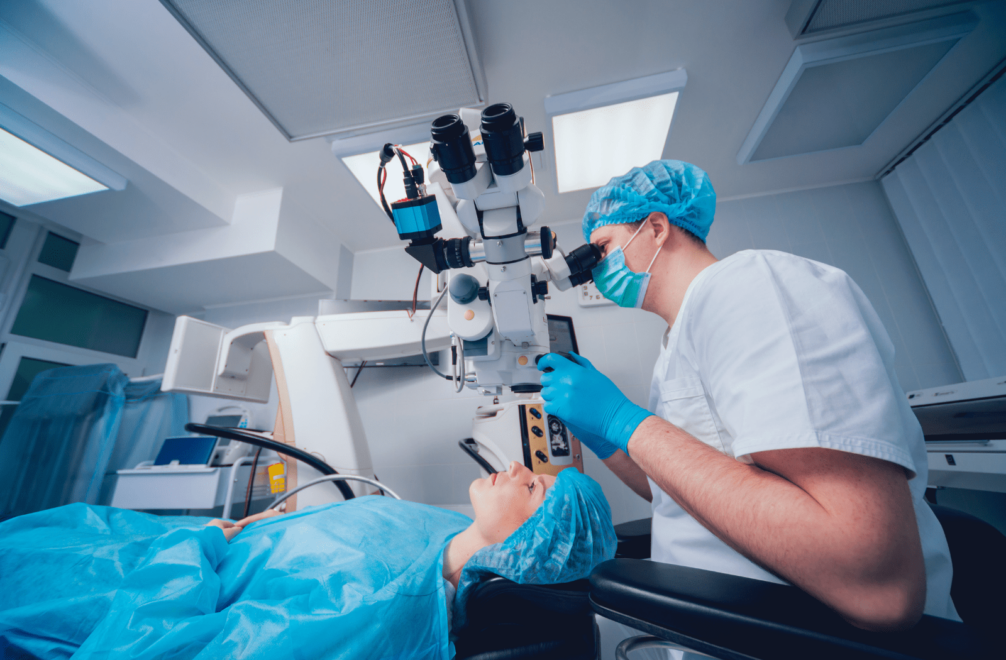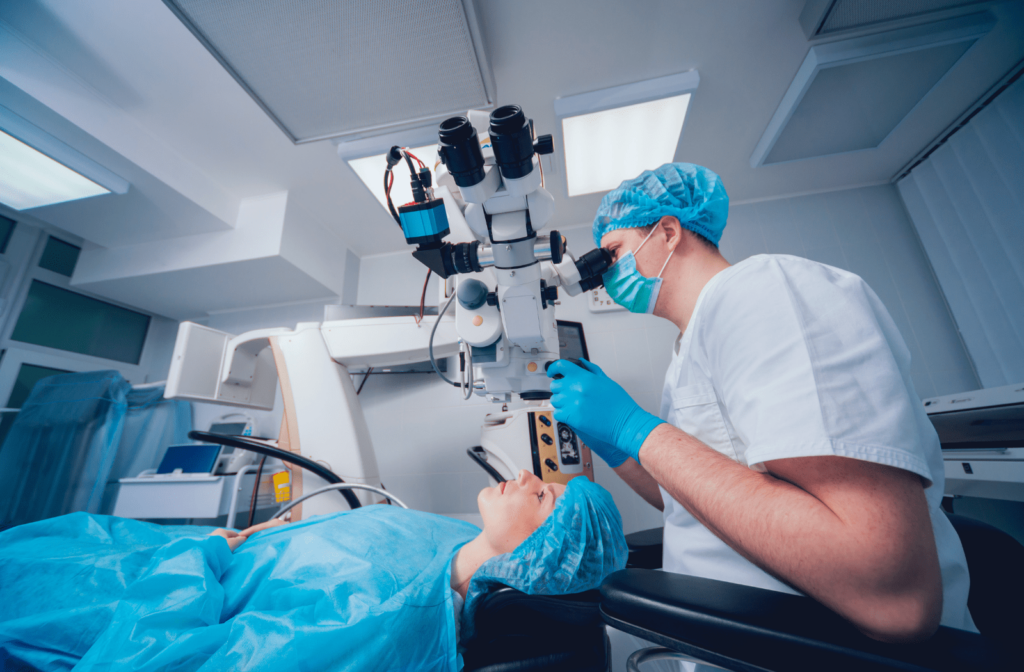
What you need to know about laser eye surgery, Lasik
Introduction
LASIK laser eye surgery is the most common and well-known laser refractive procedure or laser vision correction to treat vision issues such as blurry vision. LASIK (laser-assisted in situ keratomileusis) is an option for contact lenses or glasses.
To enhance vision, a specific cutting laser is used during LASIK laser eye treatment to accurately modify the shape of the cornea, the dome-shaped translucent tissue at the front of the eye.
The cornea correctly bends (refracts) light onto the retina at the rear of the eye with good vision. However, farsightedness, nearsightedness, or astigmatism cause the light to be bent improperly, causing hazy vision.
Although vision correction with glasses or contact lenses is an option, reshaping the cornea will produce the required refraction.
Why was Lasik’s eye surgery done?
One of these eyesight issues may be corrected when you undergo LASIK eye surgery:
Short-sightedness (myopia)
When the cornea curves too steeply or your eyeball is just a little longer than average, light rays focus in front of the retina and distort distant vision. Items that are far away cannot be seen clearly, but those that are close cannot.
Long-sightedness (hyperopia).
When the cornea is flat, or the eyeball is unusually short, light focuses behind the retina rather than on it. This results in blurry nearsightedness and, on occasion, farsightedness.
Astigmatism
Astigmatism occurs when the cornea flattens or bends irregularly, disrupting the focus of both near and far vision.

Most people thinking about LASIK surgery already wear glasses or contact lenses. If LASIK surgery or another similar refractive technique is an option, your eye doctor will discuss it with you.
Risks
Loss of vision as a result of complications is highly uncommon. However, some LASIK side effects, notably dry eyes and transient vision issues like glare, are very typical. You can also read more about Why Should You Consider Laser Eye Surgery, Lasik by clicking here.
Few people think these are long-term issues because they typically go away within a couple of weeks or months.
Among the risks of LASIK surgery are the following:
Arid eye Tear production temporarily declines after LASIK surgery. Your eyes may seem especially dry for the first six months following surgery as they recuperate. Your eyesight may get blurry if you have dry eyes.
Your ophthalmologist could suggest eyedrops for dry eyes. You may choose a different technique to have specific plugs placed in your tear ducts to stop your tears from draining away from the surface of your eyes if you have extremely dry eyes.
Halos, glare, and double vision Following surgery, you may experience trouble seeing at night, typically lasting a few days to a few weeks. Increased light sensitivity, glare, halos surrounding bright lights, or double vision may be experienced.
Your eyesight in low light (at dusk or in fog) may be less clear after surgery, even though a satisfactory visual result is measured under standard testing conditions.
Under corrections
You won’t get the improved eyesight you expect if the laser eliminates too little tissue from your eye. Nearsighted folks are more likely to have under-corrections. You might require a second LASIK treatment to remove additional tissue within a year.
Overcorrections
Furthermore, there’s a chance that the laser will take too much tissue from your eye. It might be more challenging to rectify overcorrections than under-corrections.
Astigmatism
When tissues are removed unevenly, astigmatism might result. Additional surgery, glasses, or contact lenses might be necessary.
Flap issues
During surgery, folding back or removing the corneal flap from the front of your eye might lead to problems, including infection and excessive crying. During the healing process, the outermost corneal tissue layer underlying the flap may grow abnormally.
Regression
Regression is the gradual return of your vision to the original prescription. A less frequent complication is this one.
Changes or loss of vision
Surgery-related complications can very rarely cause blindness. Additionally, some people may not see as sharply as they formerly did.
Circumstances that raise risks
Certain medical disorders can raise the risks of LASIK surgery or reduce the predictability of the results.
Suppose you suffer from specific illnesses like autoimmune disorders like rheumatoid arthritis, a weakened immune system brought on by immunosuppressive drugs, or HIV. In that case, your doctor may not recommend laser refractive surgery.
It is typically not advised to have LASIK surgery if you:
- Have an eye condition that causes the cornea to weaken and swell, or if it runs in your family
- Have generally fair eyesight
- Have extreme nearsightedness
- Have weak corneas or huge pupils
- Participate in combat sports that could result in facial blows

Discuss your questions and concerns with your doctor if you consider getting LASIK surgery. Whether you are a candidate for the surgery or other similar operations will be discussed with your doctor.
How do you get ready?
You can take the following actions to prepare for surgery:
- Research potential costs. Most insurance companies won’t pay the expense of LASIK surgery because it is typically regarded as elective surgery.
- Arrange for a ride home; Be ready to pay for your expenses out-of-pocket. You’ll require transportation to and from the surgical location. Your eyesight could be cloudy after surgery, and the effects of the drug you were previously prescribed can still be felt.
- Don’t wear eye makeup. Use of eye makeup, cream, perfumes, or lotions should be avoided the day of your procedure and the day before. In the days before surgery, your doctor could also advise you to clean your eyelashes more frequently or every day to eliminate debris and reduce your risk of infection.
What to anticipate
People who are properly assessed before surgery to ensure they are appropriate candidates for the operation tend to have the best long-term outcomes from LASIK.
Before your examination and operation, you must stop wearing contact lenses since they can alter the structure of your cornea. During this time, you should only use glasses. Depending on the type of contacts you use and how long you’ve worn lenses, your doctor will give you precise instructions.
Your eye doctor will do a thorough eye exam, ask questions about your medical and surgical history, and evaluate your eyesight to determine whether you can have the surgery done safely.
Your doctor will check for indicators of the following:
- Inflammation of the eye
- High eye pressure;
- Large pupils;
- Dry eyes
Your ophthalmologist will also measure your cornea, taking note of its thickness, shape, and any anomalies. Your eye specialist will assess the parts of your cornea that require shaping and calculate the precise volume of tissue that has to be excised from your cornea.
Conclusion
Before doing LASIK surgery, doctors typically thoroughly evaluate your eye using wavefront-guided technology. In this exam, a scanner builds a comprehensive chart of your eyes that resembles a topographic map. Your eye specialist can remove corneal tissue the more precisely the measurements are.
Before the procedure, your doctor will explain the advantages and disadvantages of LASIK and what to expect before and after the procedure.


